Always remember the following rule: the greater the height of the heel, the smaller the step must be.

- Step on the heel
- Comfortable or uncomfortable?
- How high heels can affect your body
- Frequency matters
- A brisk walk or how to exercise nicely
- How to run without a heel.
- The technique for walking correctly on heels
- How do you keep your heels nice so your legs don't tire?
- Ask? Answer!!!
- Silicone designs to prevent fatigue
- Help for tired feet
- High-heeled shoes cause pain and swelling
- Special insoles eliminate pain
- heels and the spine
- What should I do?
Step on the heel
On Sunday my girlfriend and I went for a walk together…. Girlfriend decided to go shopping. We had a common interest - we needed fall shoes. We parted ways in the first boutique – she for comfortable shoes and I for beautiful ones.
– you, as always, high heels I've never seen you without the Eiffel Tower under your heels. how do you walk in it Alla dreamily stroked the elegant shoe with the nine centimeter heel.
- I would like to carry but I can't, it's terribly uncomfortable, I'm not used to it. On top of that I'm tall, where else and heels! I heard it's harmful that it causes varicose veins. And yet, when you see a girl in stilettos, you want to feel them. The gait is so flowy and she looks elegant under the dress…. Maybe you should learn to walk in stilettos?
O, Women! It is our eternal pursuit of perfection! Of course, a woman's foot in a stiletto looks sexy and attractive. But are such girls comfortable walking along the asphalt and spending all day in the office? And what to do with other complexes related to paragraphs?

Comfortable or uncomfortable?
I'm wearing heels since I was 14 years old. Of course, my first heel was only three centimeters high, but they were real pumps with an elegant, subtle heel down. Since then I have not parted with my heels. They have gradually grown to a height of between nine and twelve centimetres. For me, a five-centimetre heel is just relaxing. I'm not tired. It's just a matter of getting used to it. But! If my feet were overworked the day before or if I'm going to the market on my day off, I definitely wear flip flops or sneakers. And not because they are more comfortable. My feet need a break from the monotonous posture. My muscles need variety.
This is not SecretI'm not sure if the calf muscles and tendons work differently with and without heels. So my love of heels is not fanaticism. I also have two or three pairs of shoes from the same season and wear them alternately. As a result, my feet tire less under the same load. And the most important thing: a shoe with a heel must always sit well on the foot: the instep, the width of the foot, the stability of the heel. It's an individual feeling. For first-time wearers, however, heels are something completely different.
You can also very comfortable for the foot and be stable. Don't believe the cliche 'if a heel is uncomfortable, it's beautiful'. Of course there are these 'shoes' for a stylish museum - they are impossible to wear, let alone walk in. Try them on, walk around the store in them to get a feel for the slightest discomfort. The shoes must not be too narrow, otherwise the instep falls off the feet. Then, of course, high-heeled shoes seem like hard work!
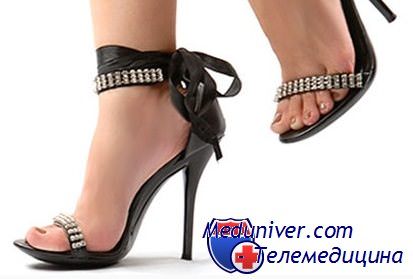
How high heels can affect your body
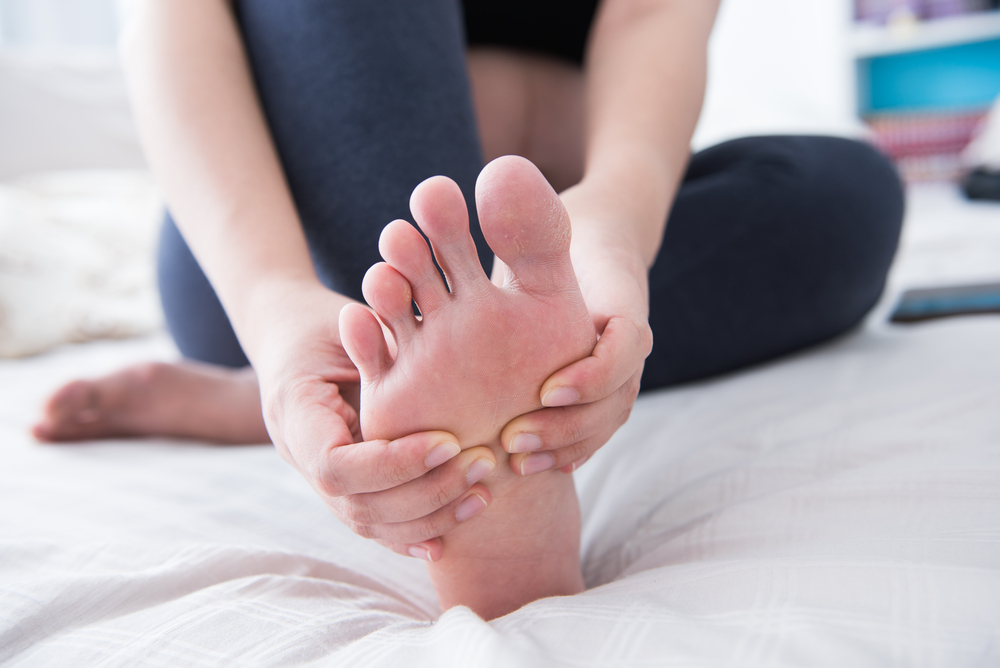
High heels prevent your feet from working properly. Wearing high-heeled shoes can lead to joint disease of the foot bones, milky toes, calluses, ingrown toenails, neuromas - just about any foot disease you can think of.
Wearing high-heeled shoes every day can cause the tendon that connects the ankle muscle to the calf muscle to shrink severely and lose elasticity. This can make it difficult to stretch your legs and even walk barefoot.
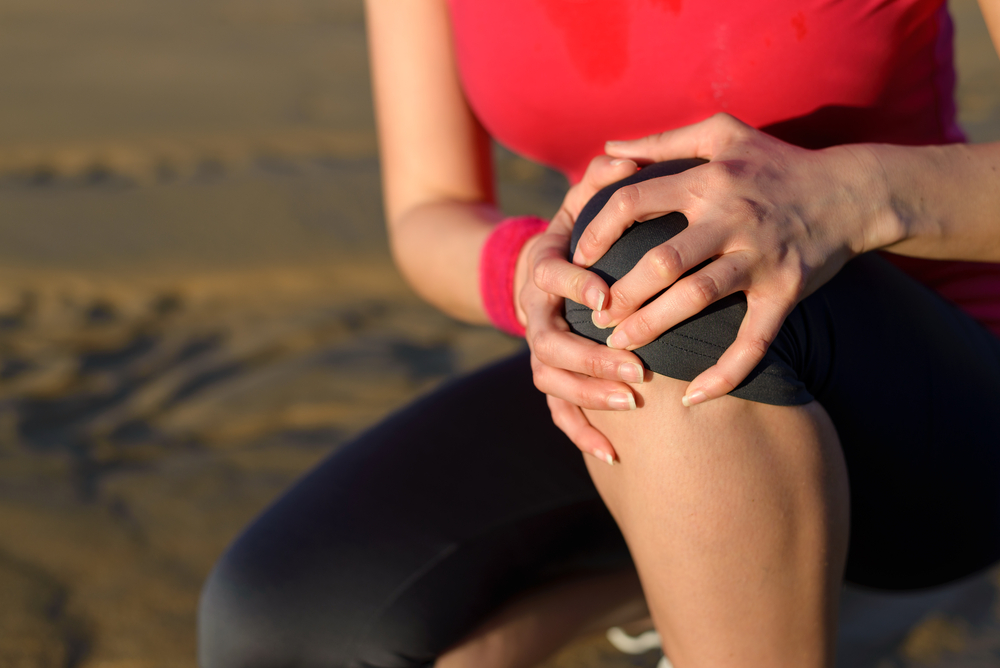
When wearing heels, the weight of the body is shifted to the feet and the knees come forward for balance, putting additional stress on them. Because the joints position themselves unnaturally, arthritis (osteoarthritis) develops in the knees over time, which in particularly severe cases can require surgery.
Like the knees, the hips also stretch forward to offset the excessive pressure on the toes. Because the hips play an important role in every movement of the leg (walking, running, bending), pain can occur in the hips, including the inner thighs, buttocks, and groin. The hips also control posture. When the hips are misaligned, it affects the entire spine, up to and including neck pain.
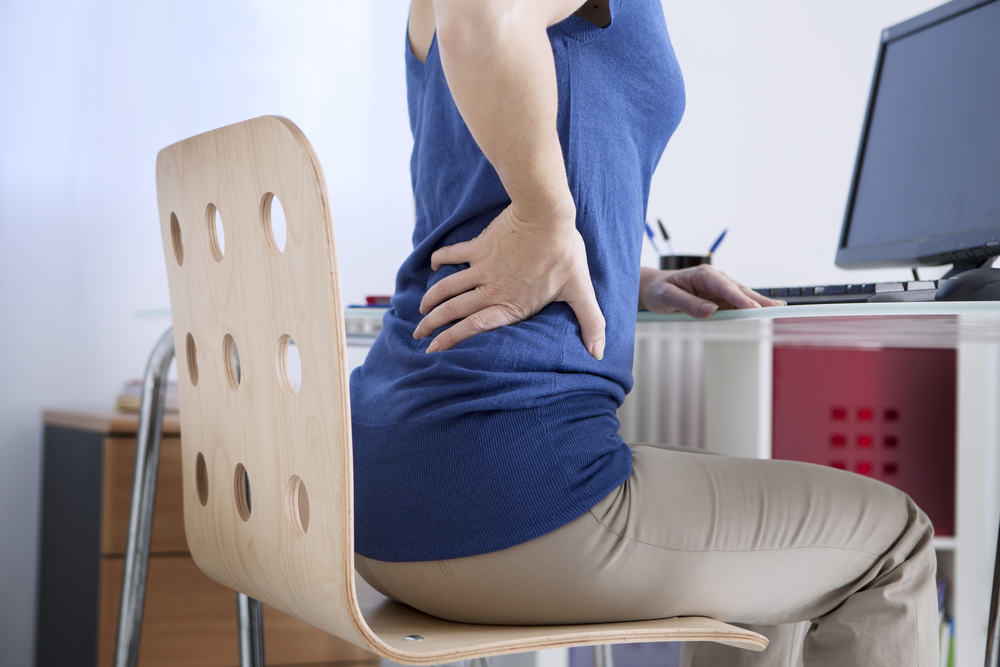
Have you ever wondered why a woman in heels looks so attractive from behind? As the hips and knees are pushed forward to offset the extra weight being transferred to the arch of the foot, the lower back arches back. Looking backwards may be great, but it's very bad for your back and over time can lead to chronic back pain, cramps and eventually osteoarthritis.
Frequency matters
These problems are more or less common depending on how often you wear heels. It's unclear when the ill effects will kick in, but in general, people who wear heels every day are more likely to experience long-term damage than those who only wear them occasionally.
Even if you don't wear heels very often, you're still at risk of developing bunions, curled toes, and other serious foot injuries. This may not happen so quickly, maybe in 5-10 years. Again, there can be differences depending on how long you wear heels during the day (e.g. one hour or eight hours at a time).
Have you ever worn a pair of stilettos? You still have to be careful. While wearing high heels for a day is unlikely to cause you any permanent damage, if you are not physically strong enough, are overweight, or have borrowed a pair of shoes from a friend that don't fit well, you can do serious damage carry away.
The negative consequences can occur much faster than you think. Learning how to wear heels correctly is important to reduce the negative consequences.
Before you give up heels, consider these tips so you can wear stiletto heels without serious health consequences.
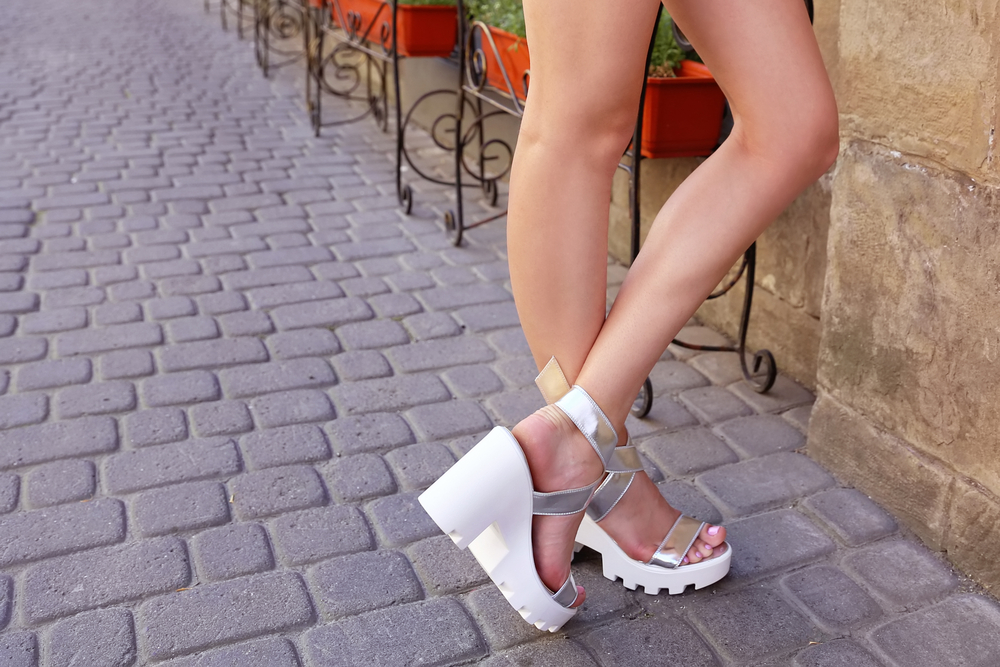
You may have already guessed that high heels are bad for your feet. The higher the heel, the more your weight shifts, which can lead to ligament tears and stress fractures. Doctors from the American Orthopedic Medical Association recommend wearing platform shoes or heels that are no more than two inches high. Platform shoes are also not the best choice for your feet, but platform shoes still decrease the instep, help maintain balance, and reduce pressure on the instep of the foot.
Shoes with a wide toe box are better than shoes with a narrow toe box. Tight shoes can pinch nerves between the instep bones or cause neuromas.
A brisk walk or how to exercise nicely
We cannot always swim like swans and rush to work or to go shopping. Often we need to move quickly, and this is very useful. The body burns extra calories, the buttocks are toned, the brain is aerated and the right thoughts come to mind.
A brisk walk differs from a slow walk in only one point, or rather, in one addition. To keep from swaying from side to side, you need to pull your shoulder blades up, not to bring them closer together, but to pull them together to feel tone.
Some people think that to walk fast you have to lean forward, but this is a misconception. To walk fast, you need to quickly move your legs, follow all the rules described above, and bring your shoulder blades a little closer together.
How to run without a heel.
The basic principles are the same. Posture (shoulders down and facing forward), feet in a straight line and a wide stride, but the tread of flat-soled shoes, whether sneakers, ballet flats, loafers, moccasins or barefoot shoes, should be on the outside of the foot rib are located. Make sure that the arch of the foot and the outside of the foot do not touch the ground so that the weight of the body falls more on the outside of the foot. This is a micro-movement that is not visible to the eye but can be felt when walking. Your feet no longer swell, you have less pain and you are less tired. And most importantly, your gait will be light and easy, calm and smooth.
A gait technique is easy to incorporate into life at a time when we really want to be queen, to attract and to fascinate. The most important sign of a correct gait is walking and enjoying it. We make ourselves more and more happy with every step. This is the magic of the body that is available to every woman.
The technique for walking correctly on heels
To ensure a natural and smooth gait on heels, you should use the following technique:

- The chin should be raised, without constantly looking at the shoes. The arms can be stretched out slightly for balance.
- The crotch shouldn't be too short or too long - it looks ridiculous. The toes of the feet should always point in one direction. The step should be quite quick. The floor should not be slippery or wet. It is also a good idea to choose shoes with a rubber sole for training. You can also wipe them with sandpaper to make them rougher.
- The pressure is first applied to the heel, then the weight is shifted to the toes. This shouldn't feel like a jump. If you feel pain in your legs, you should take a break.
- Rotate your hips slightly to make your gait more relaxed. You can watch instructional videos that clearly demonstrate the different techniques for proper walking. Some lessons are designed to be learned in 1 day.
- You need to learn how to bend and squat in the shoes. To practice at home, you can put a glass of water on the floor and understand it several times in a row so that the liquid does not spill.
- If you master the right technique, you should not walk in heels for more than 2-3 hours a day.
Note that you should study in correctly sized shoes, otherwise you may fall. The shoes should fully adapt to the foot and not be too wide. If you lose your balance in a situation, drop yourself properly. Do not attempt to regain balance if you fall as this may result in a broken or dislocated foot.
How do you keep your heels nice so your legs don't tire?
Walking in stilettos and low heels is fairly easy to learn. But this attribute is associated with tired feet, blisters and muscle pain in many girls.
To prevent signs of fatigue on your feet, you should consider the following tips:
- It is very important to choose comfortable shoes with a low heel. Also, make sure it doesn't wobble and is firmly on the ground.
- It is advisable to have not only a stiletto heel, but also a wide, sturdy heel or a wedge heel in your wardrobe.
- It is advisable to spray the feet with deodorant or a special solution. This is especially important in hot weather to keep your feet from slipping in your shoes.
- Always carry a set of patches with you. If your shoes start to pinch during the day and no other footwear is available, apply the patch immediately.
- The rough edges of your shoes can be coated with petroleum jelly or greasy cream to keep them from sticking to the skin.
- Special insoles help to improve cushioning.
- To prevent your feet from getting tired longer, you can put a bandage around the 3rd and 4th Experts say that there is a nerve between these toes, which causes increased pain.
- It is advisable to do a little exercise in the morning: stretch the tendons and twist the ankles. This takes about 10 minutes but will help keep your legs from getting tired throughout the day.
- If you have the opportunity during the day (e.g. at work), you should massage your toes and calves to improve blood circulation.
If you have blisters or vesicles on your skin, you can soak your feet in a special solution. To do this, you need warm water and magnesium sulfate, which you can buy at the pharmacy. This not only accelerates the regeneration of the skin, but also disinfects it.
Ask? Answer!!!
A: If you wear heels for long hours, your feet will naturally get tired. However, taking your shoes off for a while is not the best solution. This is because your feet tend to swell when your body is tired. This will undoubtedly make your feet looser initially. But if you try to put the shoes back on, you will feel very uncomfortable. Therefore, such shoes are difficult to put on after the rest period and appear narrower. Avoid wearing heels all day to avoid fatigue. Remember to take a spare pair with a flat platform.
A: If your feet slip or you feel uncomfortable wearing heeled shoes, stock up on silicone insoles. Not only do they prevent slipping, but they also make your shoes more stable and walking in stilettos more comfortable.
Silicone designs to prevent fatigue
In order to prevent signs of fatigue in the feet, many manufacturers now offer special silicone insoles. These are inserted into the shoes before they are put on. The padding conforms to the shape of the foot and the shoe, preventing the foot from shifting in the shoe, preventing chafing and keeping the shoe in place. In addition, the manufacturers promise a light massage effect.
Of course, they have a certain effect and prevent calluses and corns. But they are 'disposable' items, so to speak, to be used only with the same pair of shoes. In addition, some insoles become very thick over time and the foot simply no longer fits in the shoe with them. With open shoes, they can be visible, and in general, not all women feel comfortable in such models.
Help for tired feet
If a woman wears heels all the time, there are preventive measures against tired and swollen feet. First, wash your feet with cool water or take a foot shower after removing your heeled shoes. This restores normal blood flow to the feet and reduces swelling. Douching with black or green tea, herbal baths with chamomile and mint are helpful. After the bath, dry your feet with a towel and apply a moisturizing or toning foot cream. It is helpful to lie down for ten minutes with your feet up.
Massaging the feet and toes is an excellent way to prevent fatigue and circulatory problems. If you've been wearing heels all day, consider massaging your calves and shins. If your feet are severely swollen, ice cubes are a great help - rub them gently over your tired feet until they are completely thawed. If your feet are constantly tired, you can buy special creams for the lower limbs at the pharmacy.
High-heeled shoes cause pain and swelling
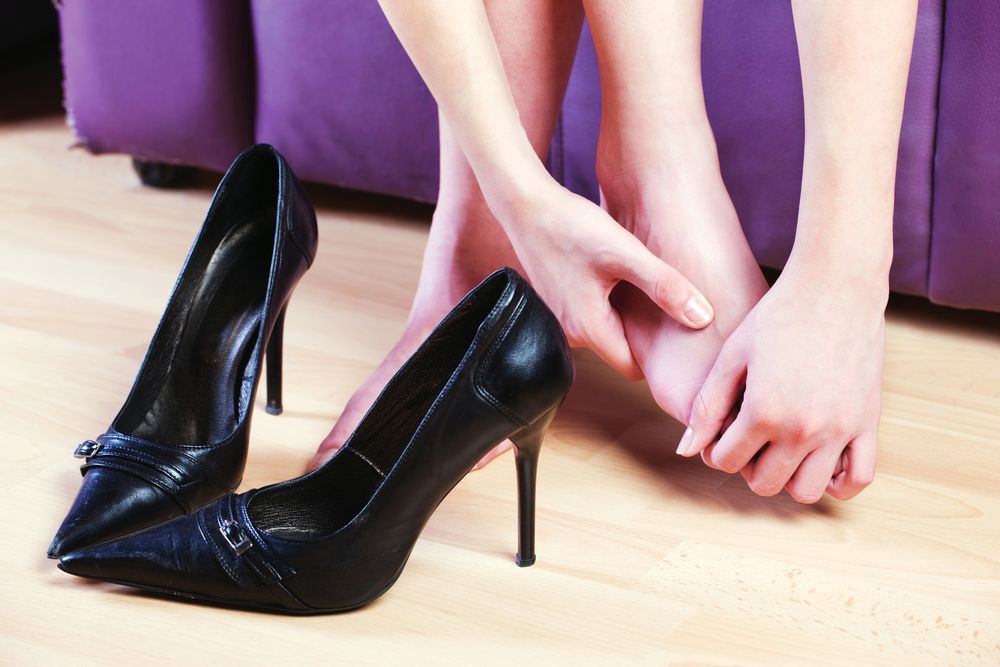
Every year, many women seek medical advice complaining of back and lower back pain; there is also pain between the shoulder blades. Wearing inferior shoes for a long time can cause deformation of the foot and big toe. Surgery may even be necessary in up to 10 percent of cases. Wearing high heels is the cause of these symptoms.
Wearing high heels can cause headaches, drowsiness, and lethargy. But despite these difficulties, women still like to wear heels because, as the saying goes, beauty requires sacrifice. But is that also the case for them?
How to wear heels without pain? And how can you save yourself a lot of trouble?
Special insoles eliminate pain
Many lovers of high heels sooner or later notice pain in their feet, some changes in the foot. Shoes begin to wear outwards or inwards. If these symptoms appear, an orthopedist should be consulted as soon as possible.
The center of gravity is shifted and the arch of the foot is deformed. As a result, a transverse flat foot and even a curvature of the big toe can occur. If timely action is not taken, surgical treatment may be necessary.
If the changes are not that severe, it is advisable to start using insoles early enough to prevent them. This exercise relieves the foot, helps to distribute the pressure correctly and relaxes tense muscles. What causes severe pain and swelling? Wearing inferior high-heeled shoes. The risk of developing varicose veins also increases.
The choice of insoles should be made by a doctor who will see you in these special shoes. After the doctor has learned about your condition, examined your feet and shoes, and assessed any changes in the way you wear your shoes, they will provide an opinion and recommend an insole that is appropriate for your foot.
It is not advisable to buy insoles in stores because every foot is different. It is best to go to a specialized orthopedic center, where an individual impression of the insole will be made. The material of the insole can be anything: leather, fleece, etc. Each insole has special massage points.
Thanks to this construction, you can wear your favorite shoes without pain and reduce swelling.
heels and the spine
How can heel height affect the spine?
The mechanism is very simple. When a woman wears stilettos, she is standing on tiptoe, so to speak. The joints and muscles of the legs transmit information to the brain that the foot is in the wrong position. The vestibular apparatus interprets these signals as if the body is deviating from the vertical. Walking in heels is a sustained fall. To avoid this, the brain activates the muscles around the spine to make an effort to maintain the posture. However, the tension on these muscles proves excessive - nobody actually falls anywhere.
The mode of this increased tension turns on when the height of the heel exceeds 4 centimeters. The muscles around the spine begin to fail, compressing the vertebrae and discs. Medical research has shown that every extra centimeter of heel increases the load on the spine in the same way as putting a 10 kg weight on your shoulders.
For the spine, a shoe with an eight centimeter heel is like lifting a 40 kilogram barbellthat you carry with you all the time. However, the real strain is felt by the whole body, all joints signal the increased strain, while the heels only put certain muscle groups into emergency operation. The woman is not even aware of this, except that in the evening she feels completely exhausted.
The frequent wearing of high heels regularly overloads the back muscles. The consequences are various degenerative diseases of the spine and intervertebral discs (osteochondrosis, herniated discs), which require the help of not only an orthopedist, but also a neurologist.
However, if the process of spinal hernia is neglected, the pathology will progress. Once a weak point has formed in the spine, the herniated disc will continue to grow over time and the pain will increase. High-heeled shoes can therefore ultimately lead to the need for neurosurgical treatment.
What should I do?
The internet is full of 'miracle' recipes on how to walk in heels without harmful consequences. So e.g. B. suggested tying the middle and heart fingers together with a thin band, which is said to relieve pain syndrome. Unfortunately, such provisions have no medical basis.
The only sure way to stay healthy (not just for your feet!) is to wear comfortable shoes. From an orthopedic point of view, the stronger sex has the advantage: most men's shoes have laces, a wide toe and a small heel and can easily be equipped with orthopedic insoles if necessary. But there are also women's shoes that meet these requirements!
And if you plan to walk in shoes, you should choose models with a relatively small heel. Use special orthopedic insoles - there are now some on the market that are suitable for shoes with a heel of up to 6 cm. Exercise therapy and physical therapy are also essential. Compression stockings are helpful because they promote blood circulation in the distal parts of the leg (foot, ankle, shin) and ensure good muscle and ligament tone.
But constantly walking in heels and then running to the gym or physical therapy is pointless. It's like treating a stomach ulcer by constantly neglecting your diet. In general, it's worth wearing model shoes, unless you're going to the theater, a presentation, or a restaurant a few times a month for no more than 4 hours. And then it's better to go to the venue and come back in ordinary, comfortable shoes that allow for a comfortable leg position and a normal gait.
author
Tsukanov Denis Valeryevich, orthopedist and traumatologist
- Optimal heel height for women.
- Does it make sense to walk in heels?.
- The heel of the shoe is worn.
- Shoes fall off the heel - what to do?.
- What to do if the sneakers pinch in the heel?.
- Rubbing heel in shoes.
- What to do if the back of the shoe rubs against the heel?.
- Curved heel.
